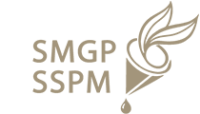Addiction Stages
9 Minutes
CONTENTS
Developing an addiction to alcohol or drugs is not a sign of weakness or a character flaw; it takes much more than willpower to overcome it. The process is more complex than it is perceived, with a series of addiction stages, each changing the neurochemistry and the working of the brain differently.
Despite the powerful cravings and a strong compulsion to use substances, achieving sobriety is possible. Many addiction recovery centres are working throughout the UK to help people break the addiction cycle and remove the problem from the root. One of the most essential and initial aspects of this treatment is to understand what addiction is, how it develops, and how it goes through. This information can help individuals align to their treatment programmes and recover more efficiently and smoothly.
The word “addiction” has been taken from a Latin term that translates to “bound to” or “enslaved by.” Anyone who struggles with addiction or has a loved one suffering from addiction can appreciate the meaning of this word and its application to real-life experience. Addiction can exert a powerful and prolonged influence on the brain, and this influence manifests in three different ways:
- Loss of control over the addictive behaviour
- Craving for the object of addiction
- Continuous involvement in the addictive behaviour despite its negative consequences
For many years, people believed that only drugs and alcohol were able to trigger addiction. However, more recent research and the latest neuroimaging technologies have now revealed that certain pleasurable activities, such as shopping and gambling, can also exert similar effects on the brain. The standard diagnostic manual for psychiatric issues directly identifies multiple types of addiction, each associated with a specific activity or substance. However, newer evidence suggests that all these types are different expressions of a typical brain process.
In the 1930s, researchers began investigating the causes of addictive behaviours. At that point, most believed that people who fall victim to addictions lacked willpower or were morally flawed. In that context, overcoming addiction required punishing or scaring them into mustering the will to break the habit.
The scientific consensus has drastically changed since then. Today, experts identify addiction as a long-term ailment that alters the function and structure of the brain. Just like diabetes hits the pancreas and a cardiovascular disease damages the heart and the blood vessels, addiction takes over the brain. This hijack happens gradually, during which the brain goes through a cascade of changes, starting with recognising pleasure and ending in compulsive behaviour to extract that pleasure.
The symptoms of addiction can vary from person to person, depending on the type and duration of addiction. The most common among them are mentioned below:
Psychological Symptoms
- Mood swings
- Tiredness
- Increased temper
- Agitation
- Paranoia
- Defensiveness
- Memory problems
- Poor judgement
- Inability to focus
- Feelings of hopelessness
- Poor self-esteem
Behavioural Symptoms
- Dishonest or secretive behaviour
- Poor performance at work or school
- Withdrawing from responsibility
- Social isolation
- Loss of interest in activities, hobbies or events that you once enjoyed
- Continuous use of substances despite its adverse effects on mental and physical health
- A failure to reduce or stop the use of substances or engaging in addictive behaviours
Physical symptoms of addictions:
- Lack of attention to self/ personal hygiene
- Disrupted sleep patterns
Multiple factors contribute to addiction, such as environmental influences, hereditary causes, emotional, behavioural patterns, socioeconomic status, and more. While different experts have proposed different categorisations of addiction stages, most agree on four main phases: experimentation, regular use, high-risk use, and addiction.
Many people never make it beyond stage one, and those who progress beyond stage 2 most likely end up developing an addiction. Following is the breakdown of the four stages of addiction to get you a rough idea of where you or your loved one stand in terms of developing this issue.
Stage One: Experimentation
Experimentation is the first addiction stage that may or may not lead to full-blown addiction. It is common and often encouraged in young people; however, it is essential to remember that experimentation is not always harmless. For a teen exhibiting risk factors for addiction, experimenting with alcohol or drugs can easily lead to a long-term substance use disorder.
In adults, experimentation occurs as they expand or change their social groups or join a new job with a new workplace culture that celebrates drug use. Irrespective of when or how you start experimenting, each case has to be seen individually. For example, if someone resorted to using drugs in a state of vulnerability, there is a high possibility that this use will continue and progress into a more severe problem. Similarly, if a drug positively helps someone, such as with social acceptance or stress relief, this positive reinforcement can also fuel addiction.
Stage Two: Regular/Social Use
This stage is comparable to a bifurcating road for a lot of people. Some of those who reach this point will keep engaging in regular substance use or activity without getting dependent on it. Nevertheless, they’ll still be at a high risk of developing addictive behaviours in the near future. Regular indulgence in drugs or alcohol also can result in high-risk behaviours, such as rash driving under the influence, depression, or emotional volatility.
Hence, it becomes crucial to watch for any changes in priorities, mood shifts, or early signs of addiction. Many people experience a withdrawal from friends and family and fail to limit their substance use during this stage. They may develop personal concerns or feel ashamed of their behaviour yet continue to engage in the addictive behaviour.
Stage Three: Risky Use/Abuse
The transition from stage two to three is relatively quick and often difficult to detect in others and yourself. During this stage, the addict prioritises their addictive behaviour and substance use over all other facets of life. They are not even afraid of the consequences that these habits may bring. Some warning signs linked with stage three of addiction include depression, fatigue, irritability, psychological and physical cravings, etc.
At this stage, repeated exposure to the offending substance forces some addicts to develop hypersensitisation. This biological phenomenon allows them to feel greater pleasure the next time they indulge in substance use. Hypersensitisation consequently leads to incentive salience, a psychological phenomenon that makes the drug a reward for the body, increasing its craving even more. The biological need for the substance and its psychological craving make it easier to develop dependence and, eventually, addiction.
Stage Four: Drug Addiction
As the final stage of addiction, its characteristics include continuous use of substances regardless of their side effects on mental and physical health, poor work performance, and possible involvement in criminal activity. Personal relationships are either stained or wholly lost, and if untreated, the addict quickly hits rock bottom with the loss of loved ones, near-death experiences, and possible arrests.
For most addicts, stage four of addiction includes an experience that they have never previously imagined when they first started experimenting with drugs. Even if they can identify their problem, they aren’t willing to seek help. At this stage, family support is crucial to help the addict recover.
No matter which stage of addiction you are in, it is imperative to seek help immediately, especially if you have reached a point where you cannot stop indulging in the addictive behaviour on your own. Remember that addiction is a progressive disease that, if left unmanaged, can get worse. Thankfully, it is entirely treatable, and various addiction treatment modalities are available to assist in recovery.
Most rehabs offer addiction treatment as a part of their 28-day-long residential programme. However, the duration of treatment can be changed according to each client’s unique needs, commitments, and requirements. Within a rehab, each client gets an opportunity to undergo detox and tackle the withdrawal symptoms before transitioning to intensive rehabilitation programmes.
A high-end private rehab provides treatment underpinned by the famous 12-Step model that utilises an abstinence-based approach curated by Alcoholics Anonymous. This model ensures guiding principles to aid the addiction treatment journey. It also targets the clients’ motivation to change their unhealthy addictive behaviours and thought patterns using the elements of spirituality.
Other features of an addiction programme include:
- Pre-admission assessment to measure the severity of addiction and rule out co-existing disorders
- Medically-assisted detox, if required
- Family and couples programme
- Individual, group, and family therapy
- Access to the 12-Step support groups
- Aftercare programmes for long-term sobriety
In addition to the comprehensive inpatient services, addiction treatment is also available in the form of outpatient and daycare therapy. These options can also serve as a step-down in intensity for clients who have finished a rigorous residential treatment course.
For more information on how to get help for addiction, give us a call today.
FAQs
How does addiction work?
Numerous theories have been proposed about addiction and what it entails. The latest findings suggest that the object of obsession (the specific substance you use, such as alcohol or cocaine) is far less important than previously believed. Instead, new evidence suggests addiction as a functional phenomenon, i.e. it serves as it destroys. It reflects a relationship between a person and an object or activity. Thanks to this phenomenon, the activity or object keeps becoming increasingly crucial while all previously important activities become less significant. Ultimately, addiction includes the tough fight between acting on the impulse and resisting it. Addiction occurs when this struggle starts affecting health, work, family, and other daily activities.
How can I spot the signs of addiction in a loved one?
If you are concerned that a loved one may have developed substance dependency, look for the following initial symptoms suggestive of an addiction:
A lack of interest in everyday chores and responsibilities
Changes in spending habits
Altered behaviour
Poor physical health
Declining mental health
Changes in physical experience
What are the long-term effects of drug addiction?
In the long run, addictions of any type can lead to a broad range of devastating problems with a detrimental impact on the well-being and overall quality of life. The following are some examples of the negative consequences secondary to addiction:
Stained personal relationships
Family breakdowns
Homelessness
Financial difficulties
Loss of job leading to long-term unemployment
Suicidal tendencies
Legal problems, such as imprisonment and arrest
HOW THE BALANCE CAN HELP WITH Addiction
The Balance RehabClinic is a leading provider of luxury addiction and mental health treatment for affluent individuals and their families, offering a blend of innovative science and holistic methods with unparalleled individualised care.
A UNIQUE METHOD TREATING Addiction
a successful and proven concept focusing on underlying causesOur program consists of treating only one client at a time individually designed to help you with all the problematic aspects of your life. All individual treatment sessions will be held at your private residence.
more infoYour program is designed based on your personal needs. The team will exchange daily information and adjust the schedule as we go. Our therapists will work with you treating the root causes and not just the symptoms and goes beyong your stay to ensure lasting success.
more infoOur biochemical imbalance can be affected by diet and stressful life events, but it often goes back to genetics and epigenetics. We do specific biochemical laboratory testing to determine an individual’s biochemical imbalance. Combining the results of the lab tests with anamnestic information and clinical tests, we prescribe an individualized and compounded vitamin, mineral, nutrient protocol to help recover from various disease states.
more infoOur experts combine the best from psychological treatment, holistic medicine to support you individually and providing complementary therapies all coordinated from one source working complementing each other integrative.
more infoUsing latest cutting-edge technology-based therapies such as Neurofeedback, tDCS, and SSP, we can track the biological patterns of your body, giving us valuable insight into your health and well-being as well support your brain and body performance and recovery with neuromodulation.
more infoComplex trauma is often a key factor to distress mental and physical state. The Balance provides a safe space along integrated trauma treatment methods to enable healing.
more infoAddiction TREATMENT LASTING APPROACH
0 Before
Send Admission Request
0 Before
Define Treatment Goals
1 week
Assessments & Detox
1-4 week
Psychological & Holistic Therapy
4 week
Family Therapy
5-8 week
Aftercare
12+ week
Refresher Visit
Addiction Insights
latest news & research on Addiction
Vaping Dangers UK
Moreover, vaping can cause lung and organ damage, breathing problems, and conditions like EVALI (e-cigarette, or vaping, product use-associated lung injury)
read more
Monkey dust Addiction
Individuals most at risk of monkey dust addiction include those already struggling with other forms of drug addiction or those with underlying mental health issues
read moreAccreditations



































































